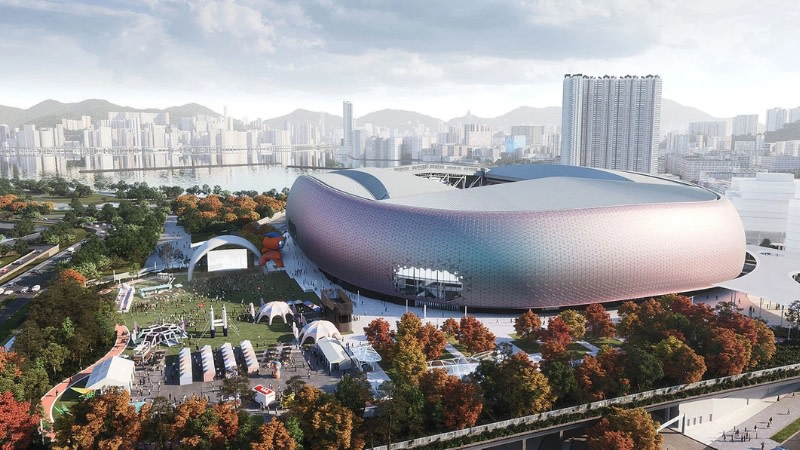
Australians are making a big impact on mega-projects around the world from stadiums and sports parks in Hong Kong to entire cities in South East Asia.
The interchange of knowledge and experience on mega-projects can lead to better outcomes for all parties, and there is a lot to learn, particularly in the lead up to the 2032 Olympics in Brisbane.
Melbourne’s Dustin Lam is a project director with Robert Bird Group and is working on the Kai Tak Sports Park in Hong Kong. The project has an estimated HKD$30 billion ($5.7 billion) construction cost.
The stadium precinct covers 28ha and includes a 50,000-seat main stadium with a closing roof, dubbed the Pearl of the Orient.
The precinct in Kowloon, across from Victoria Harbour, is due for completion early next year and also includes an indoor sports stadium, retail facilities and outdoor sports grounds.

The Robert Bird Group team developed the construction methodology and erection sequence for the main stadium roof with main contractor Hip Hing Engineering Co.
Lam said using believes the adoption of digital technologies to create the stadium virtually from construction to completion was “incredibly valuable” and that this method would become more prevelant on projects.
“There is a lot of data for projects like this and with the further adoption of AI there is a lot we can do to better predict and plan...” Lam says.
“The project is the result of years of meetings, discussions, rejections and eventually success as we near the end of the construction.
“RBG contributed by advising and sharing our expertise about steel design, how to build these large structures, and how to prefabricate and preassemble these large structures offsite, and then digitally communicating these aspects with stakeholders and working with the steel suppliers to ensure our design was easy to procure, fabricate and erect.”

Lam says living and working abroad has opened his eyes to what is possible in other countries across technology, construction and design.
“In the Hong Kong context, our team has been able to contribute to some major construction projects and advise on different ways to construct buildings using outside-the-box thinking,” Lam says.
“The size of the project is bigger than anything I have seen in Melbourne. Probably the only other project that comes close ... is Barangaroo South in Sydney.
“The amount of digital adoption on this project to coordinate all disciplines including contractors is the most I have seen on any building project.”
This was mainly driven by the main contractor who worked with all consultants and subcontractors to develop the models during design and construction.

“Populous, who are the architects for Kai Tak Sports Park, have designed an amazing-looking main stadium building with its pearlescent façade that changes colour depending on the position of the sunlight,” Lam says.
“It should inspire others to design large buildings like this to look different. To look visually stunning. To possibly change with the seasons. To be adaptable to the conditions.”
Back in Australia, original plans to develop the Gabba or create a new stadium in Victoria Park, each at a $3.4 billion cost, for the 2032 Brisbane Games were scrapped in March.
The decision came after a 60-day independent review of the city’s multibillion-dollar Olympics venue masterplan, and was dropped in favour of hosting the opening and closing ceremonies at Suncorp Stadium.
However, there was a hint of possibility of rebuilding or relocating the Gabba in the future.
There are still eight years to go and many other sporting venues will be reworked or built in South East Queensland.
After seeing what can be built in Hong Kong in just over five, in part due to the adoption of new technology, it seems anything is possible.
You are currently experiencing The Urban Developer Plus (TUD+), our premium membership for property professionals. Click here to learn more.
















